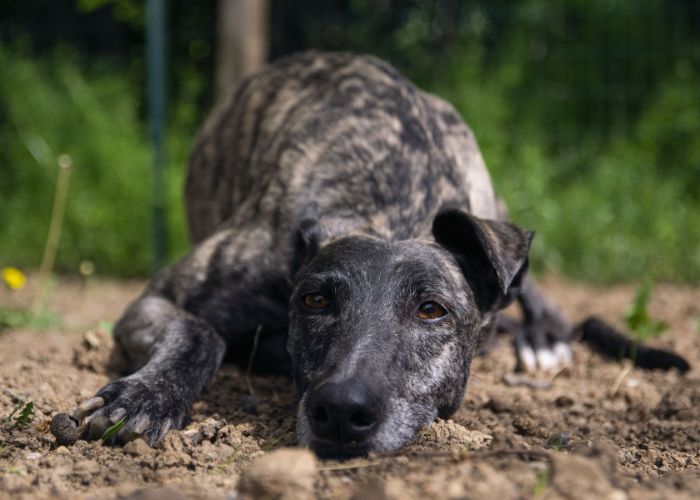MADRID – Despite frantic efforts by animal rights organisations, the fate of Spanish hunting dogs is not getting any better. Last year, more than 12,000 greyhounds, podenco’s and other breeds were discarded after the hunting season.
To be precise, there are 12,295 hunting dogs, according to the report ‘Study of the abandonment of hunting dogs 2022‘, carried out by PACMA in collaboration with 194 animal protection organisations across the country. These included 5,544 greyhounds, and 4,191 podencos’ and the remaining 2,560 are divided among other breeds. A similar study in 2019 estimated the number of abandoned dogs at 8,588 based on information from 98 animal protection organisations and shelters.
Most dogs were abandoned in the Autonomous Region of Andalucia (with 5,542 abandonments), followed by Castilla La Mancha (1,480); the Community of Madrid (1,005); Canary Islands (787) and Galicia (699). Due to the lack of data from the Navarre region, the remaining 2,502 dogs are divided between 11 communities.
The aftermath of the hunt
PACMA president Javier Luna said he regrets that he does not have data from the autonomous communities where the yachting industry is the largest. He did indicate that the 2022 study was more complete due to greater participation by animal protection organisations. Moreover, his organisation is said to have consulted close to 1,000 entities.
Related post: World Galgo Day
“In rural areas, the animal shelters are threatened or forced to make agreements with the hunters so that they do not leave the dogs somewhere, but hand them over immediately, in exchange for remaining silent about the numbers and talking about the consequences of the hunt,” he said. Luna.
PACMA explains that the study does not include information about abandoned dogs in municipalities with fewer than 5,000 inhabitants. There, government services in cooperation with private companies are charged with taking care of dogs. Obtaining that data is “almost impossible” because of the “opacity” of governments that are afraid of antagonising the hunting lobby with negative publicity, according to the organisation.
Figures not representative of reality
The collected figures therefore only reflect part of the problem and are not representative of the extent to which hunting dogs are left to fend for themselves. The Animal Party has also analysed how much money animal protectors have invested during the shelter, treatment and adoption of these dogs. For example, 8.2% of the 194 participating entities ensure that they spend less than €1,000; 31.3% invested between €1,000 and €5,000; 22.4% between €5,000 and €10,000; 19.1% spent more than €10,000 and the remaining 19% exceeded €30,000 in one year.
Dogs in bad or very bad condition
More than three-quarters (77.3%) of the participating entities confirmed that the average health status of the rescued dogs was “between bad and very bad” at the time of arrival. As a result, in addition to basic care such as food, vaccines, identification and sterilisation, attention from the veterinarian, medicines and even ethological attention was necessary.
Related post: Hunting and working dogs definitively excluded from the Spanish Animal Protection Act


